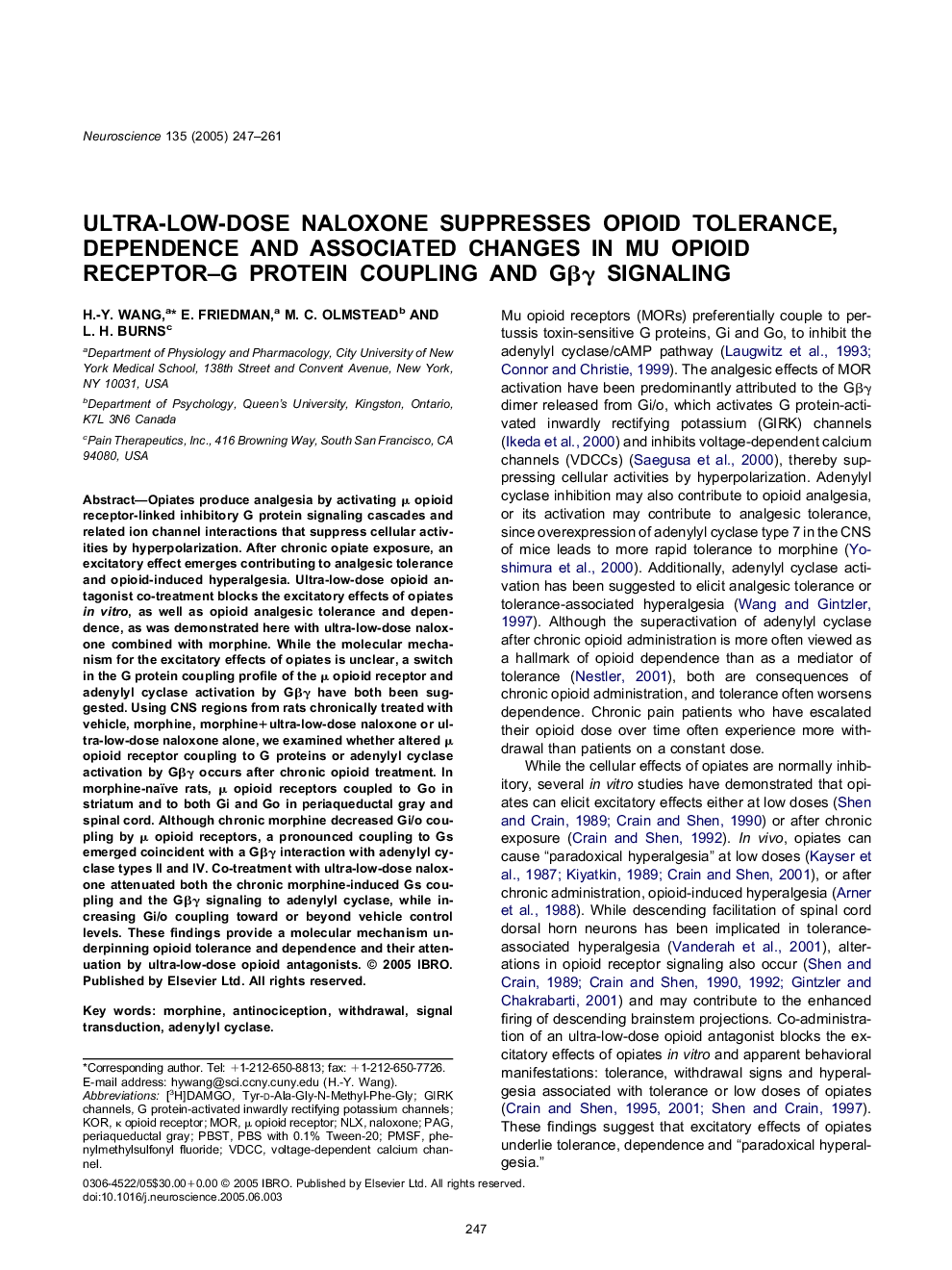| Article ID | Journal | Published Year | Pages | File Type |
|---|---|---|---|---|
| 9425770 | Neuroscience | 2005 | 15 Pages |
Abstract
Opiates produce analgesia by activating μ opioid receptor-linked inhibitory G protein signaling cascades and related ion channel interactions that suppress cellular activities by hyperpolarization. After chronic opiate exposure, an excitatory effect emerges contributing to analgesic tolerance and opioid-induced hyperalgesia. Ultra-low-dose opioid antagonist co-treatment blocks the excitatory effects of opiates in vitro, as well as opioid analgesic tolerance and dependence, as was demonstrated here with ultra-low-dose naloxone combined with morphine. While the molecular mechanism for the excitatory effects of opiates is unclear, a switch in the G protein coupling profile of the μ opioid receptor and adenylyl cyclase activation by Gβγ have both been suggested. Using CNS regions from rats chronically treated with vehicle, morphine, morphine+ultra-low-dose naloxone or ultra-low-dose naloxone alone, we examined whether altered μ opioid receptor coupling to G proteins or adenylyl cyclase activation by Gβγ occurs after chronic opioid treatment. In morphine-naïve rats, μ opioid receptors coupled to Go in striatum and to both Gi and Go in periaqueductal gray and spinal cord. Although chronic morphine decreased Gi/o coupling by μ opioid receptors, a pronounced coupling to Gs emerged coincident with a Gβγ interaction with adenylyl cyclase types II and IV. Co-treatment with ultra-low-dose naloxone attenuated both the chronic morphine-induced Gs coupling and the Gβγ signaling to adenylyl cyclase, while increasing Gi/o coupling toward or beyond vehicle control levels. These findings provide a molecular mechanism underpinning opioid tolerance and dependence and their attenuation by ultra-low-dose opioid antagonists.
Keywords
Related Topics
Life Sciences
Neuroscience
Neuroscience (General)
Authors
H.-Y. Wang, E. Friedman, M.C. Olmstead, L.H. Burns,
